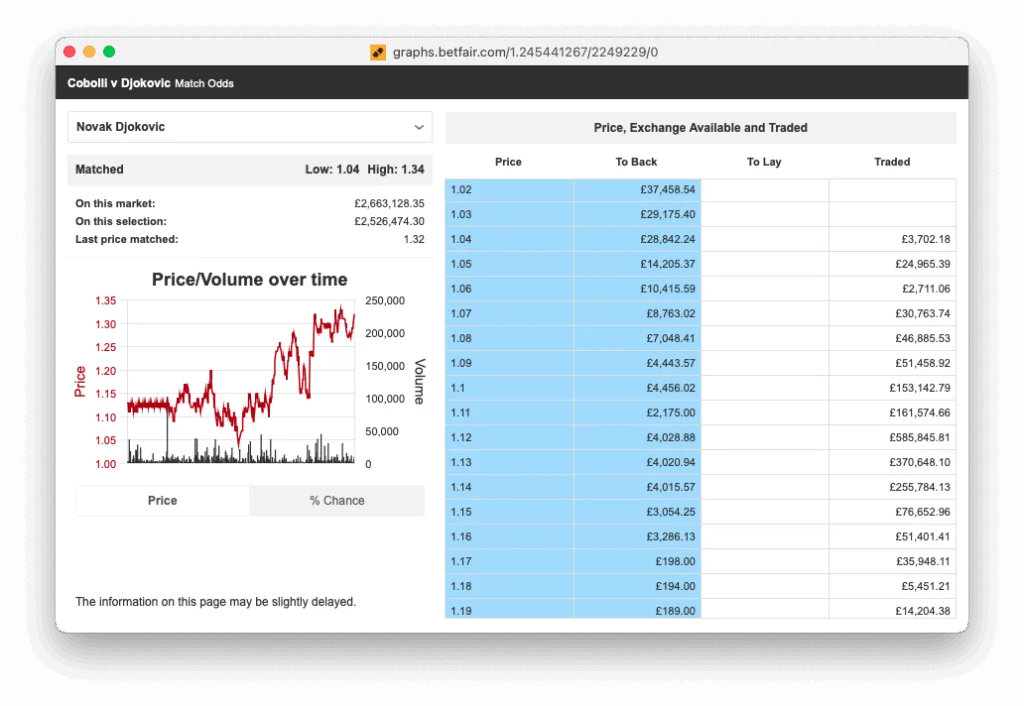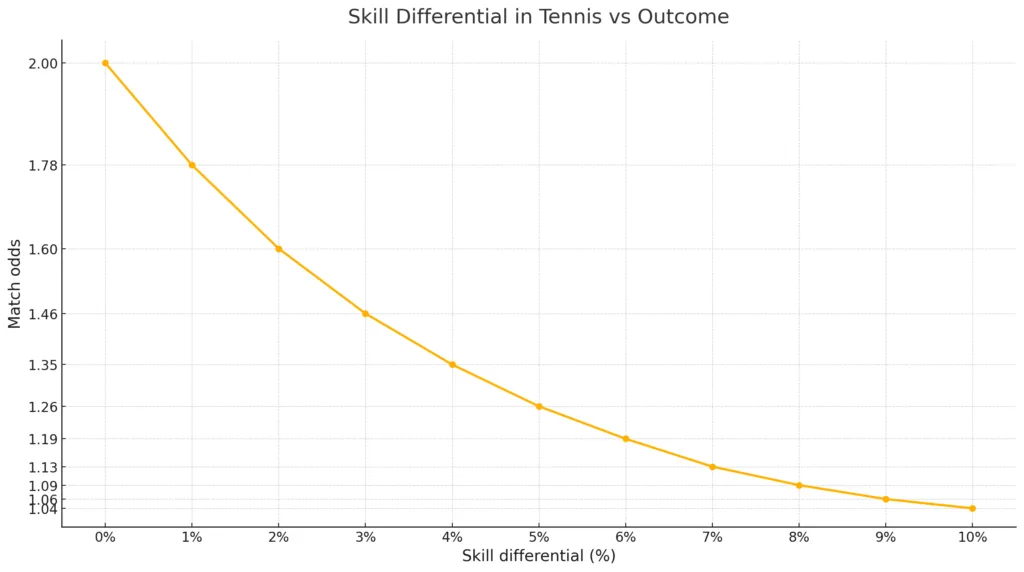Tiny Edges, Massive Moves
The curious case of “odd” odds
Ever watched an under-dog carve out a first-set lead over a superstar yet still trade above evens on Betfair? It feels counter-intuitive, but the market isn’t broken – it’s simply pricing the hidden power of tennis’s scoring system.

Points, games, sets – and exponential leverage
Tennis isn’t linear. Every rally rolls up into a game, every game into a set, and the match is first-past-the-post on sets.
Because each layer resets the score, a single point at deuce (40-40) matters far more than a point at 15-love. That nested lattice magnifies any repeatable edge a player has on key points, so the slight favourite becomes a heavy favourite once the maths is run.
Small margins, big market moves
At elite level the skill gap is razor-thin – often just a couple of percentage points in serve or return effectiveness.
Yet a 2 % edge in point-winning probability drags the fair price from 2.00 to around 1.60 at the start of the match. Widen it to 5 % and you’re looking at sub-1.30 territory.
In other words, minuscule differences balloon once they’re repeated hundreds of times across a best-of-three or best-of-five.

Why the outsider’s price can stay stubbornly high
Even when the lower-ranked player nicks a set or races to a 4-1 lead, the market knows the favourite’s underlying edge hasn’t evaporated – it just hasn’t had enough time (or service games) to re-assert itself. Traders therefore discount the early scoreline and keep the outsider on a relatively long leash.
Visualising the maths
If you plot starting odds (Y-axis) against the point-by-point edge (X-axis), the curve isn’t gentle – it’s steep. Each extra per-rally percentage point compresses the price non-linearly, which is exactly what Bet Angel’s Tennis Trader models in real time.
Trading takeaways
- Look for the hidden edge. Serve quality, second-serve aggression, and break-point conversion all feed the snowball.
- Don’t overreact to the scoreboard. A one-set lead doesn’t erase a structural disadvantage; it just buys time.
- Model, don’t guess. Tools like Tennis Trader quantify the compounding effect and show when the market has over- or under-adjusted.
- Exploit momentum windows. The best moments to oppose a favourite are when the outsider can close out the set or break serve again before the edge re-establishes itself.4
- Outsiders winning first sets are common. The best chance an outsider has of imposing themselves in a match is the first set. From there, the more experienced player can work their way back into the match.
Final thought
Tennis rewards relentless marginal superiority. Spotting – and pricing – a 1 % edge before the crowd does is where the real value lies. Master that, and the wild swings in tennis odds start to make perfect sense.
